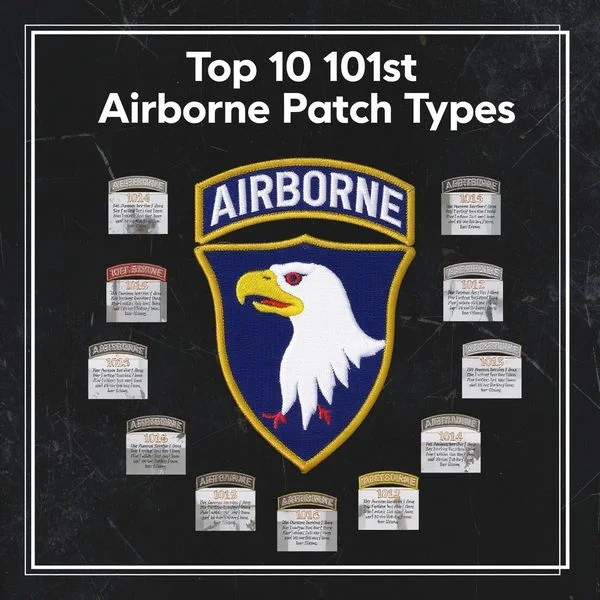We all know very well about the 101st Airborne Division, which is one of the most famous units in the U.S. Army, known for its bravery and speed in combat. Many people around the globe call it the “Screaming Eagles.” It’s an outstanding patch and is known all around the world. Across the globe, soldiers wear them with pride, and collectors search for different versions. These 101st Airborne Patches became well known in 1942 during World War II; it was originally a paratrooper unit, meaning its soldiers parachuted from airplanes into battle. During that time, this division became well-known for its heroic actions during key battles like D-Day in Normandy.
However, with the passage of time, this 101st shifted from parachute operations to using helicopters for rapid movement, and today it is known as an air assault division. According to a source, soldiers in the 101st wear a patch with a bald eagle’s head and the word “AIRBORNE” above it that symbolizes power, bravery, and their original airborne mission.
So, in this guide, you will learn about the top 10 101st Airborne patch types. The information is simple, authentic, clear, and helpful for anyone interested in history, the military, or collecting.
1. WWII Type 1 Patch
This first patch type became well-known during World War II, and it was made with cotton thread and hand-stitched in some cases, which gave it a unique look compared to later versions. In addition, its eagle’s beak was long and pointed down, which made this design stand out. Besides, soldiers of that time wore this version during some of the toughest battles of the war, and today it is rare and highly valued by collectors around the world.
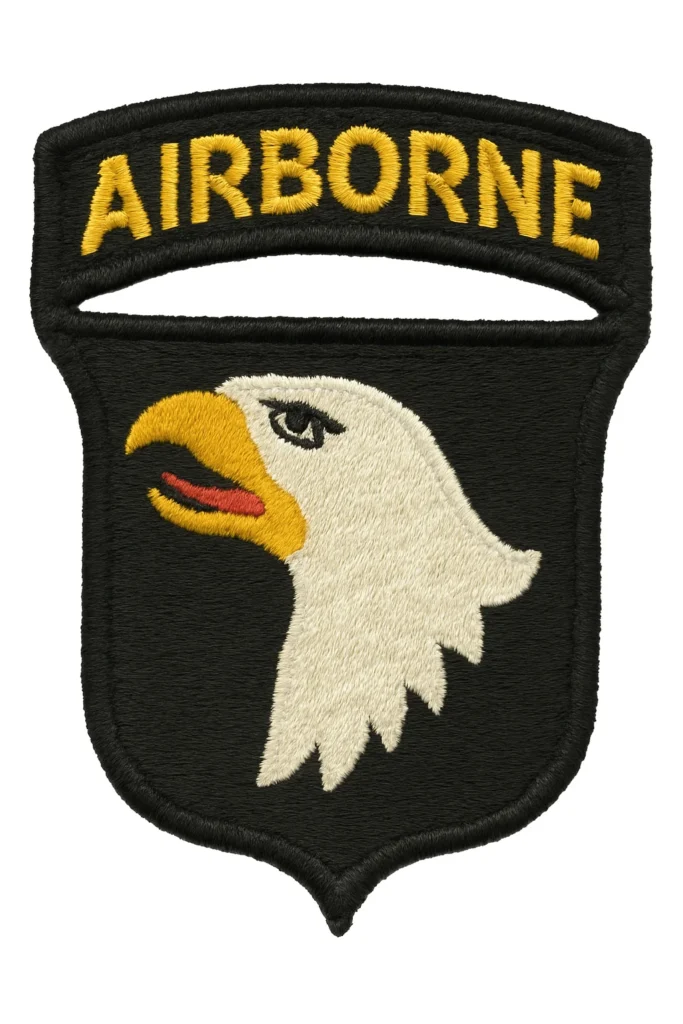
2. WWII Type 2 Patch
This patch also came during the 1940s. In this version, the eagle’s head looked straighter, with sharper eye detail. There are numerous shops that made these patches, which explains the changes. According to the sources, soldiers wore them during famous missions like D-Day.
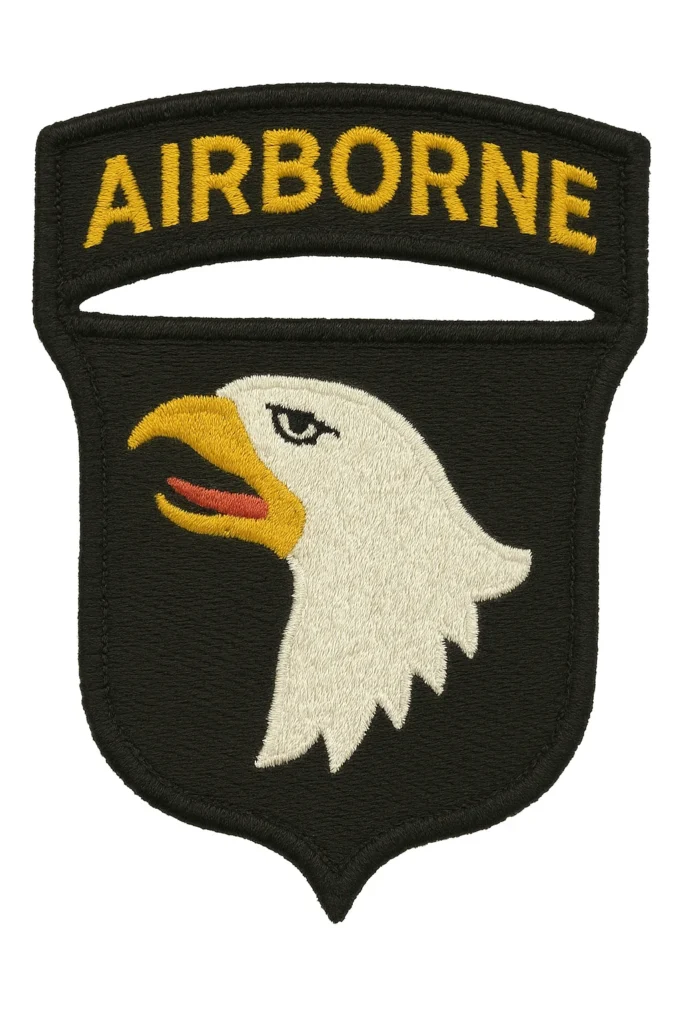
3. WWII Type 3 Patch
This is another primary version, which is the Type 3 eagle. It looks thicker, with more rounded lines compared to the earlier types. Moreover, until today, there is a rumor that the eagle’s face appears more aggressive with the patch, giving them a stronger look. This design type was not made in large quantities, which makes it rare in today’s market. Because of limited production, finding one in good condition is hard, and that is why Type 3 patches are considered special among collectors.
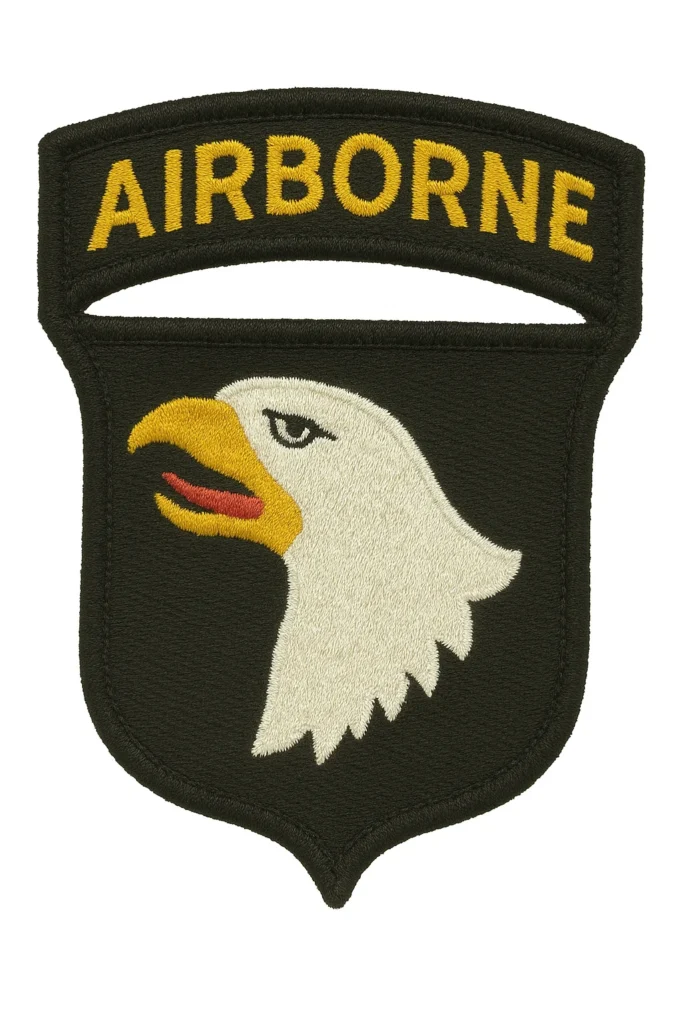
4. Full Color Dress Patch
This is also another great patch, which was worn on the Army service uniform and is the most colorful version of the 101st Airborne patch. It has bright shades, including a clean white eagle head, a yellow beak, and a golden “Airborne” tab that makes it easy to recognize. Soldiers use this patch mainly for formal wear, military parades, and official events where appearance matters. Because of its sharp design, it is also a favorite for display in collections and museums.
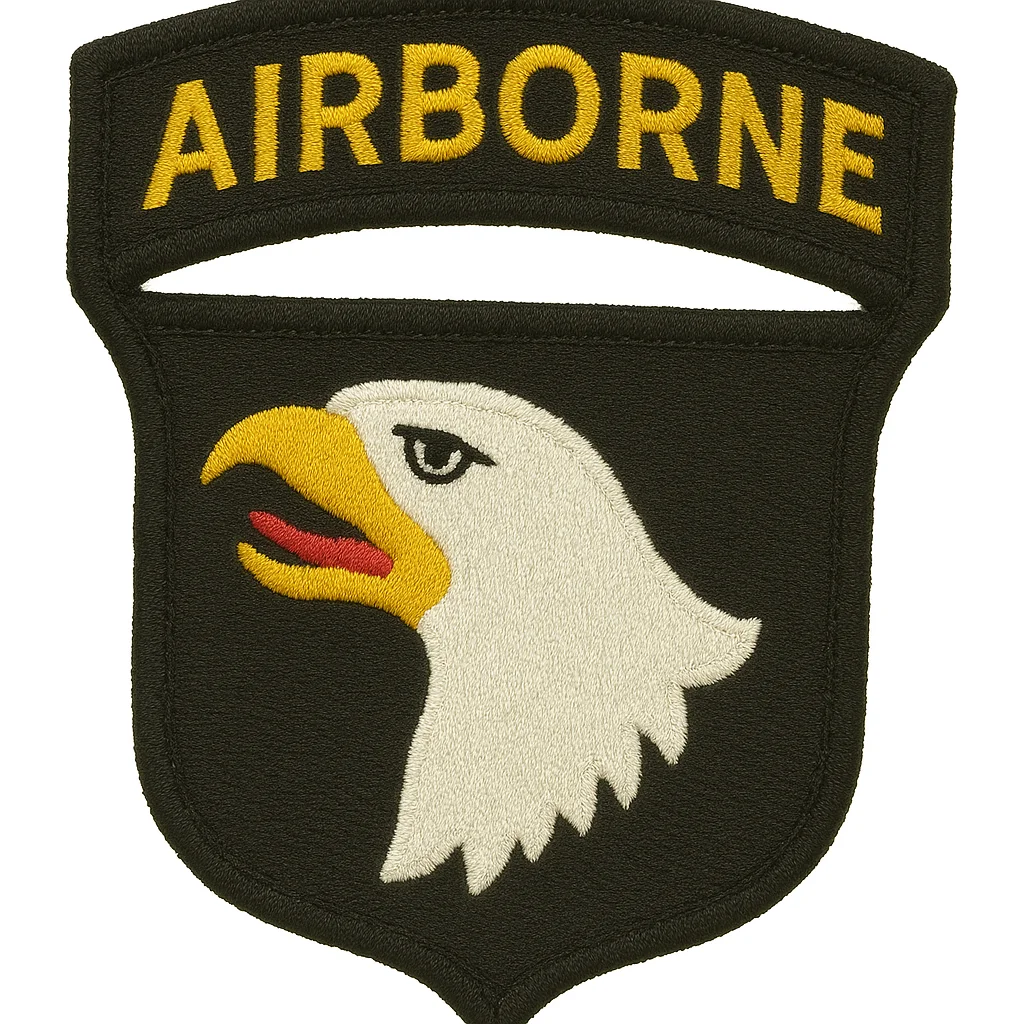
5. Vietnam Subdued Patch (Olive Drab)
This one also has an interesting history: during the Vietnam War, soldiers needed patches that blended into the jungle, so the Army introduced a subdued version of the 101st Airborne patch. It has dark green and black colors instead of bright shades, which makes it harder for enemies to spot. It was praised well due to its reduced visibility and gave soldiers an advantage during combat missions. Today, these Vietnam-era subdued patches are popular among collectors because they show the shift from bright to more practical designs in military history.
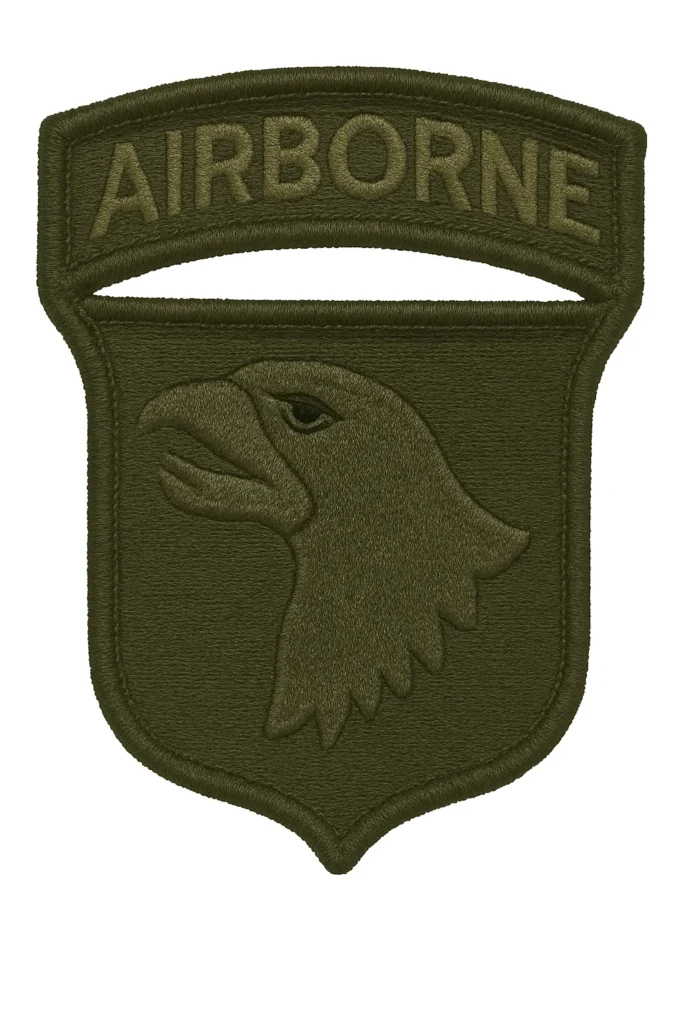
6. BDU Subdued Patch
In the 1980s and 1990s, the Army used the Battle Dress Uniform (BDU), and the 101st Airborne patch was changed to match this style. The subdued version came in dark green and black colors that blended well with the camouflage uniform. Soldiers wore this patch during training and overseas missions, making it a common sight at the time. Besides, these BDU subdued patches are easy to find in military surplus stores and can be gotten from collectors who want pieces from the Cold War period, even today.
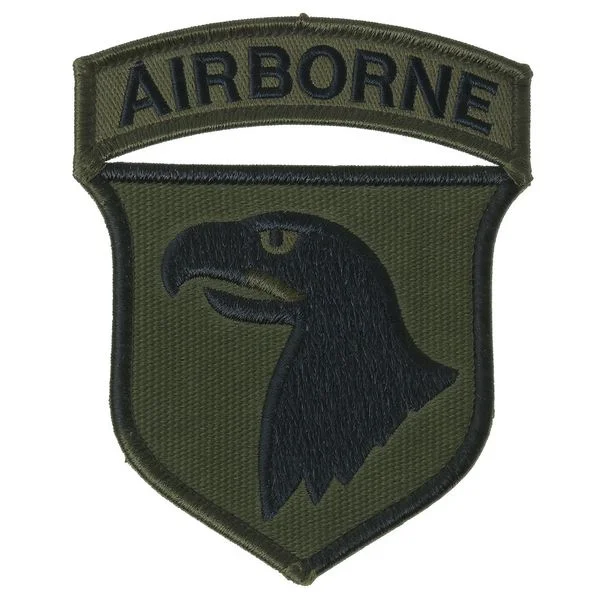
7. ACU Subdued Patch
This version was introduced to match the digital camouflage style containing gray and green colors, which blended well with the pixel-like uniform design when the Army moved to the Army Combat Uniform (ACU). However, the older patches were sewn on; this one came with Velcro backing, allowing soldiers to attach or remove it quickly. Overall, this ACU subdued patch represents how Army gear became more modern and practical during the early 2000s.
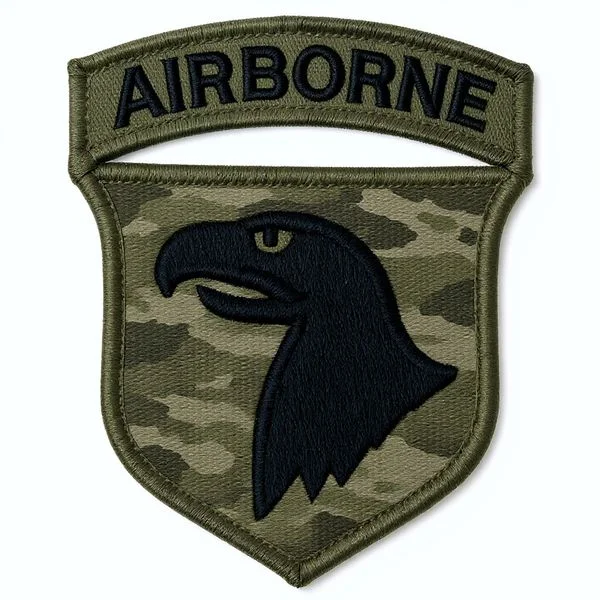
8. OCP Subdued Patch
Nowadays the Army utilizes the OCP (Operational Camouflage Pattern) uniform, and the 101st Airborne patch was efficient again to match it. So, this type has attractive brown and green colors that balance well in both desert and woodland areas, which gives soldiers better cover-up in different situations. Moreover, it contains a Velcro backing that makes it easy to remove or switch between uniforms. In short, this patch is the most common version worn by active soldiers today and represents the modern face of the Screaming Eagles.
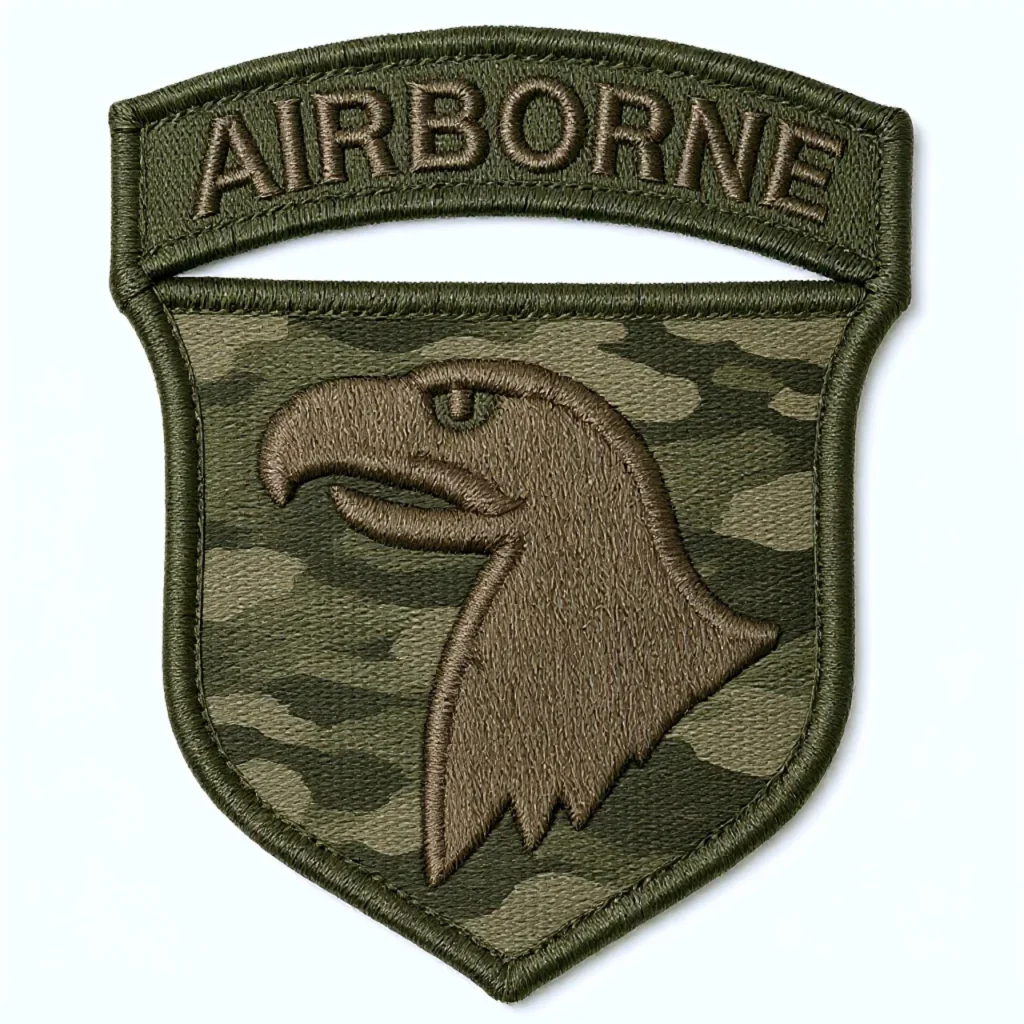
9. Air Assault Tab Patch
A few troops of the 101st also wear an “Air Assault” tab above the eagle patch that makes their uniform appearance different from others in the division. This tab shows that the soldier has completed the tough Air Assault School, where they learn helicopter operations, rappelling, and other advanced skills. Meanwhile, the training is demanding; not everyone earns this tab, so those who wear it are respected for their extra effort and are highly trained members of the Screaming Eagles.
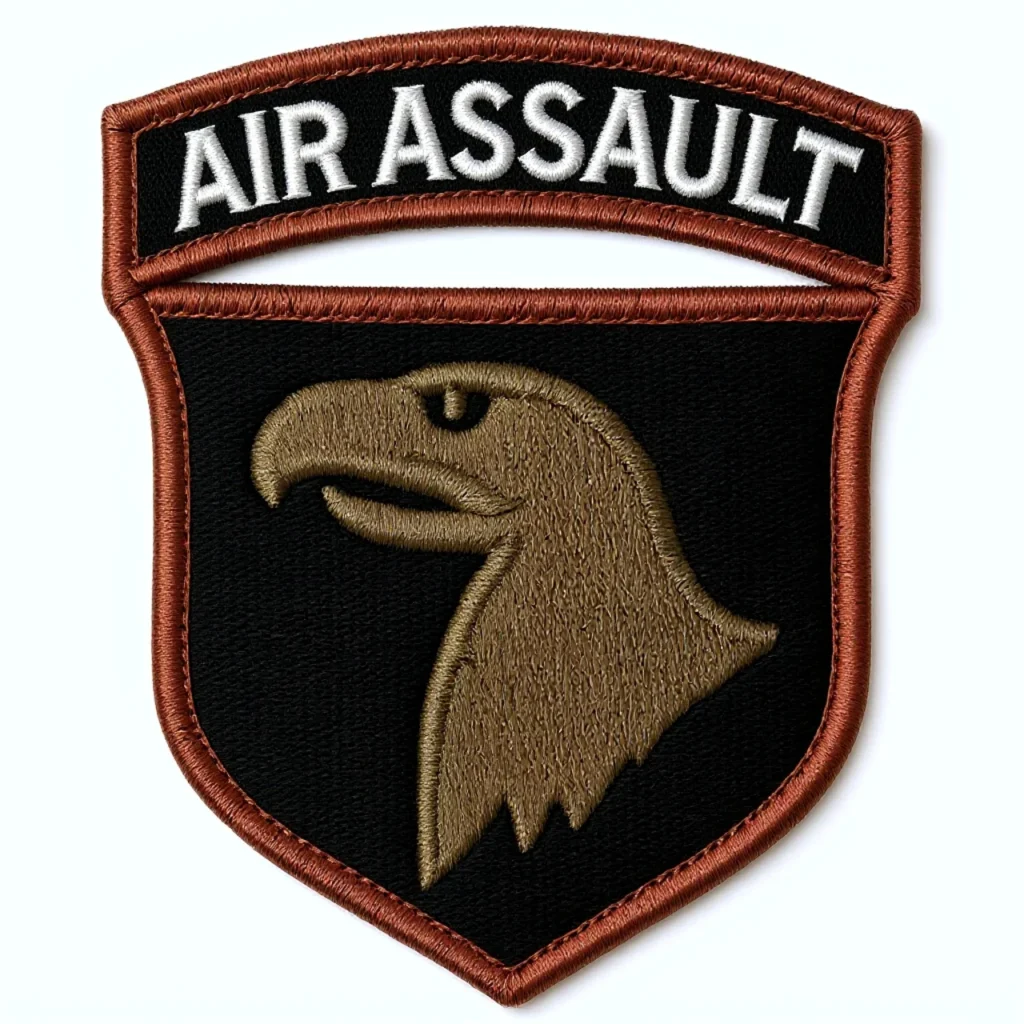
10. Special Collector Variants
Another thing is that with time, diverse factories have produced slightly different eagle shapes, colors, and stitching designs, which created what collectors now call special variants. Some patches had thicker thread, others showed brighter “Airborne” tabs, and a few had eagle beaks shaped in unique ways. These small changes were not official redesigns but came from the way each factory worked. Today, collectors treat these rare versions as special finds, and they often become highlights in patch collections.
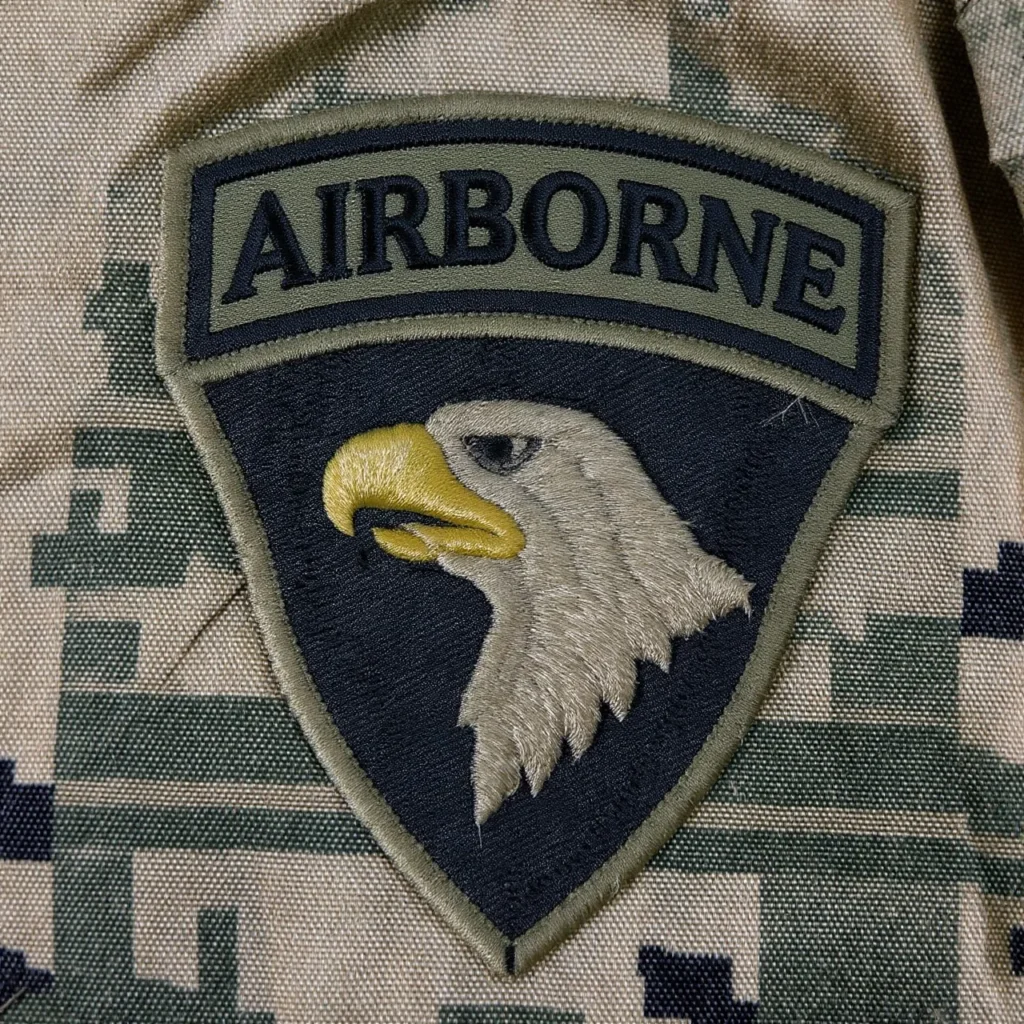
How to Tell the Difference Between Types
If you look closely, you can spot the type of patch by its design and material. Here are easy points to check:
- WWII patches use cotton stitching and sometimes have rough edges.
- Modern patches often have Velcro on the back.
- Subdued patches are always in darker or camouflage colors.
- Full-color patches are for dress uniforms, bright and formal.
Why These 10 101st Airborne Patch Types Matter
Each type tells a story about history and the Army. For example:
- WWII patches remind us of soldiers who jumped into France in 1944.
- Vietnam subdued patches show the change in uniforms for jungle fighting.
- OCP subdued patches show the Army of today.
- Collectors love to have one of each type because it completes the story of the division.
Care Tips for Your Patches
- If you own a patch, protect it well. Use these simple steps:
- It is suggested to keep it in a clean display case or album.
- We would suggest you avoid sunlight, which fades colors.
- You should store them in dry places to prevent damage.
- It is recommended from our side to not iron or wash them in machines.
Conclusion
These 101st Airborne Division patches are not only a military badge but also a piece of living history. So, from the World War II era through to modern times, it has gone through many changes, and all patch types connect to a different story of bravery and service.
Therefore, by knowing about these top 10 101st Airborne patch types, you can understand the importance of the Screaming Eagles and their role in history. No matter if you are a collector, a student, or simply curious, these patches hold lessons of courage and pride.
FAQs
How Many 101st Airborne Patch Types Exist?
Many versions exist, but these 10 are the recognized ones.
Which Patch Is The Rarest?
WWII Type 1 patches are considered rare and expensive.
Do All 101st Soldiers Wear The Same Patch?
Yes, but the design changes based on the uniform type.
Can Anyone Buy a 101st Airborne Patch?
Yes, reproduction patches are sold online. Real WWII patches are bought by collectors.

